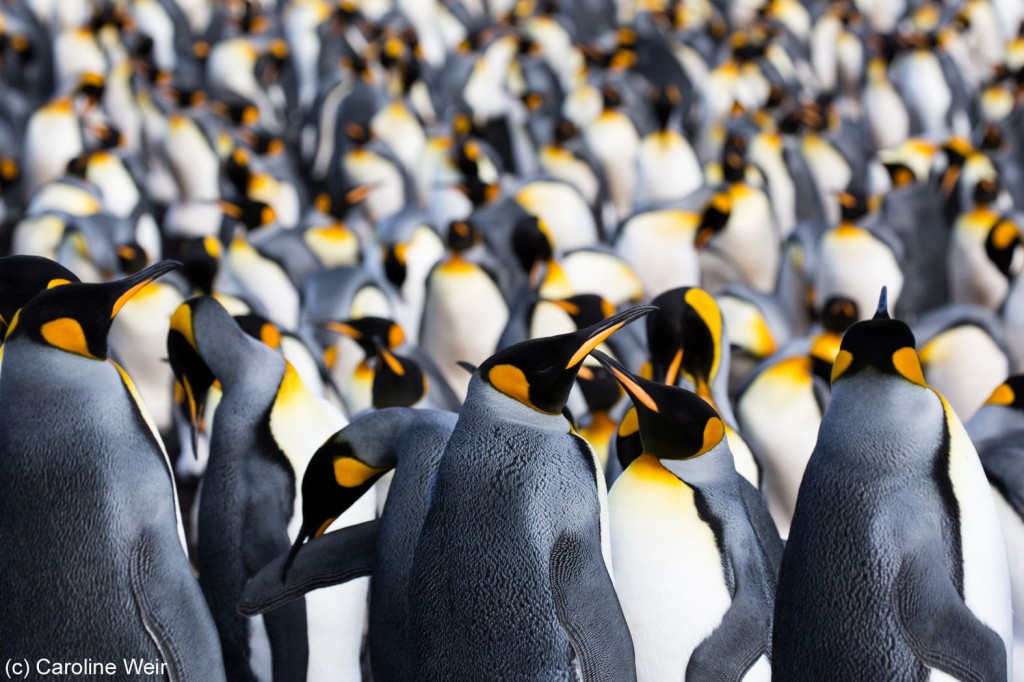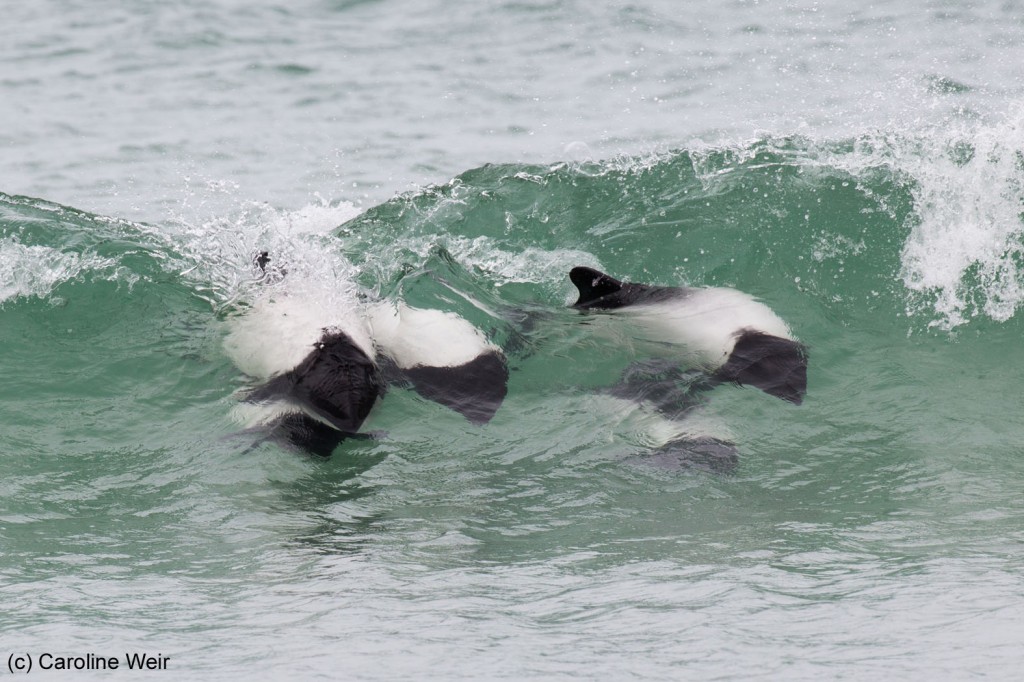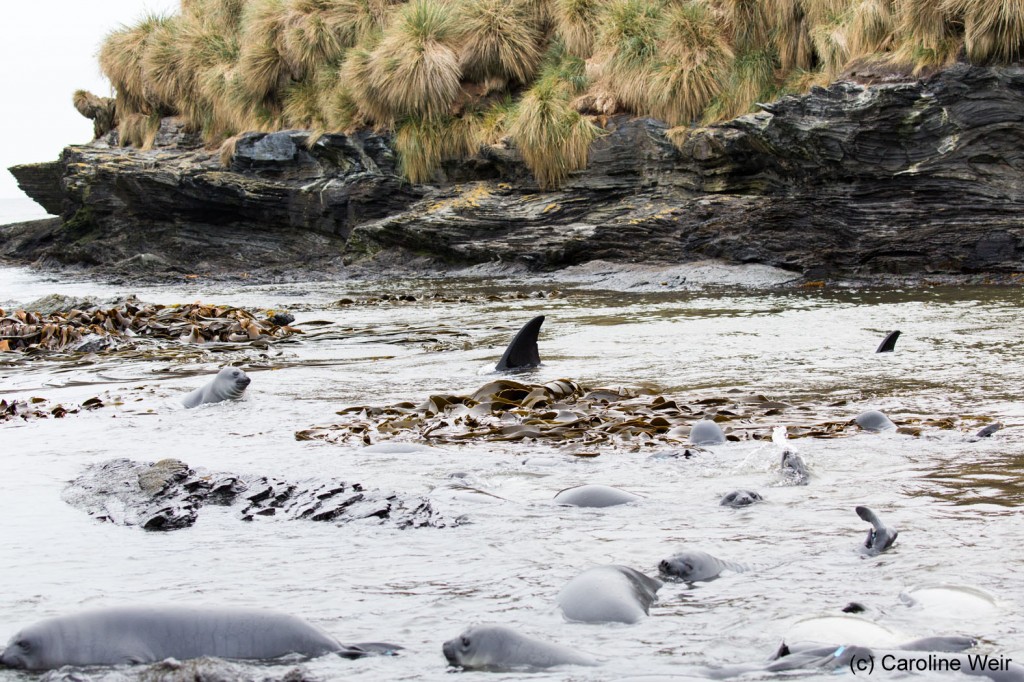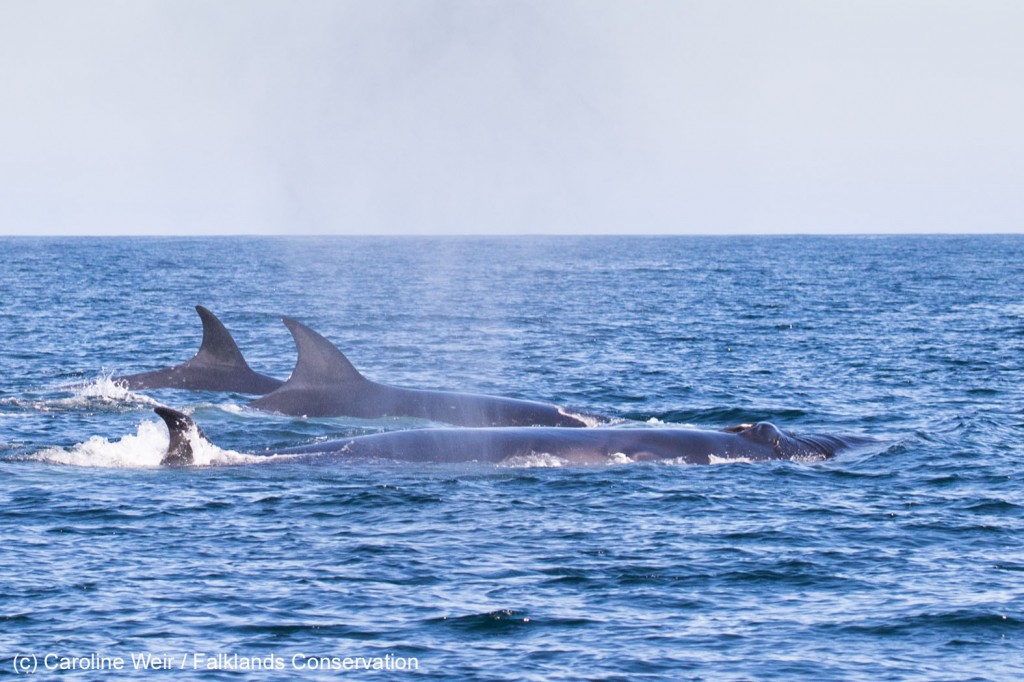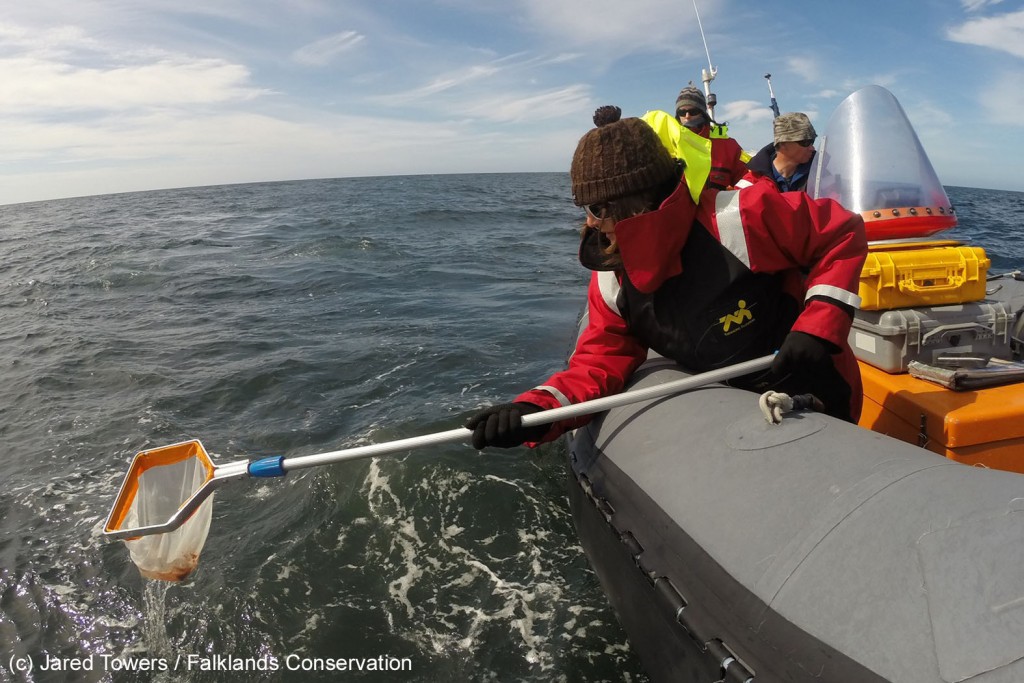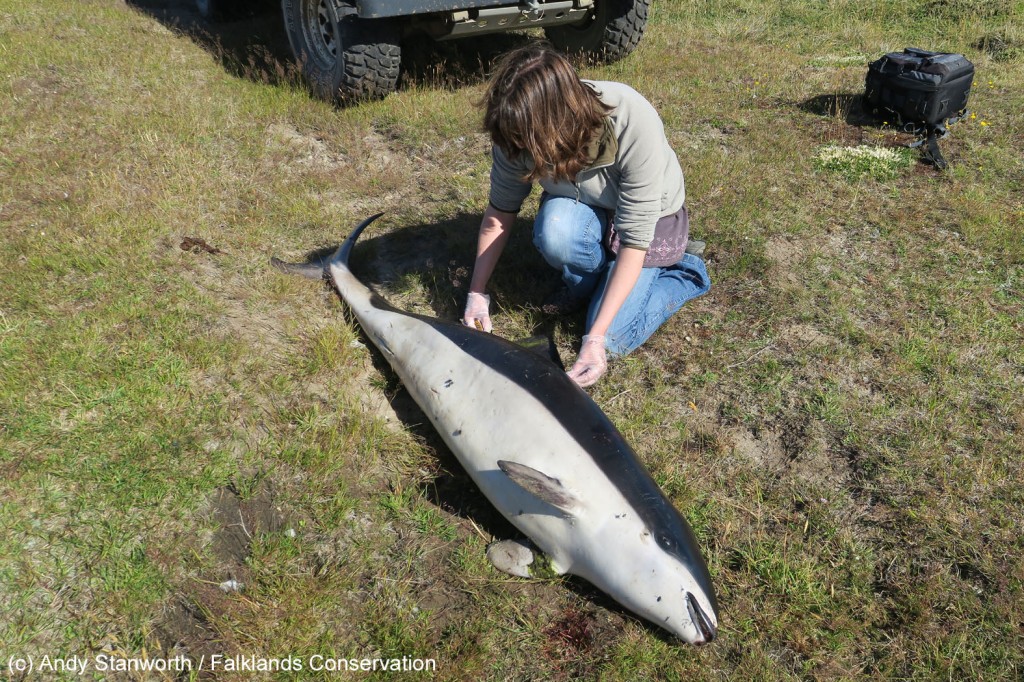In October 2016 I arrived in the Falkland Islands to initiate a research project on sei whales on behalf of Falklands Conservation. The project “Developing a site-based conservation approach for sei whales Balaenoptera borealis at Berkeley Sound, Falkland Islands” has been financed by the BEST 2.0 Programme funded by the European Union. It aims to collect baseline data on the occurrence of sei whales and their potential interactions with human activities in Berkeley Sound, an inlet located in East Falkland just to the north of Stanley.
The Falkland Islands are a remote UK overseas territory consisting of over 700 islands which are situated in the cold waters of the South Atlantic, approximately 300 miles east of the Patagonian coast of South America. There are fewer than 3,000 human inhabitants, who are greatly outnumbered by a wealth of wildlife that includes five different penguin species, several large albatross colonies and marine mammals including cetaceans, southern elephant seals and South American fur seals.
This was my first trip to the Falkland Islands, but the islands have been high on my wish list of places to visit for well over 20 years due to them being one of the few places in the world to see a small but beautiful species called the Commerson’s dolphin. The tiny size and striking piebald colouration of the Commerson’s dolphin had really grabbed my attention as a teenager, and it has been my main ambition ever since to see them in the wild. This, together with the opportunity to establish one of the first field studies of sei whales worldwide, saw me arrive in Stanley with a great deal of anticipation.
I quickly discovered that observing dolphins around the Falklands was very easy. Both Commerson’s and Peale’s dolphins occur in the vicinity of Stanley, and can be seen in shallow waters very close to shore. Indeed, during one of my first incredible encounters with Commerson’s dolphins I watched the animals surf the waves right onto the beach, then turn around on their bellies on the sand and manoeuvre back out to sea with a series of energetic tail slaps.
The Peale’s dolphins were, if anything, even more extrovert in behaviour, patrolling the edges of the kelp beds in small groups that frequently burst into periods of high surface activity including leaps onto their backs and sides, tail-slaps and high-speed chases. These behaviours became even more extreme when we started encountering them from our small research boat, with both Peale’s and Commerson’s dolphins easily comprising the most boat-friendly and curious dolphin species I have seen anywhere in the world. On multiple occasions we have been “mobbed” by Peale’s dolphins, with animals continuing to swim around and underneath the boat for lengthy periods even when we stop completely and switch off the engine!
At the start of November I flew to Sea Lion Island to search for the third of the Falklands inshore dolphin species. The island is famous for its colony of southern elephant seals, which in turn attract a formidable ocean predator. In 2009 I had watched these predator-prey interactions unfold on the BBC’s “Life” series, never expecting to see it for myself. However, on my very first afternoon sitting patiently on the rocks on the south side of the island it happened – killer whales! The famous pod is led by an adult female known locally as “Puma,” who has learnt to enter the narrow channel of a rock pool where elephant seal pups rest and practice their swimming skills before heading out to sea. On the four days that I spent on the island I saw the killer whales visit daily, with Puma entering the rock pool numerous times to try and catch a pup. At least five times I witnessed her succeed in grabbing a pup and drag it out through the channel to the remainder of the pod, who shared the spoils amid a frenzy of scavenging giant petrels. Although sad to observe these pups meeting their fate, it is difficult not to admire the ingenuity and risky strategy that this whale adopts in order to feed its family.
It wasn’t until January that the first of the sei whales began to arrive on the east side of the Falklands and my fieldwork could begin in earnest after months of planning. We adopted a combined approach for the pilot study, that comprises shore-based monitoring from the Cape Pembroke lighthouse, a series of aerial surveys along structured transects to record spatial distribution and abundance, and small boat work to investigate the feasibility of the photo-identification technique for sei whales. Although classified as Endangered by the IUCN following decades of commercial exploitation, the sei whale has received little global research focus in the past. This is largely the result of the species occupying offshore waters in many parts of its range, making it very costly and logistically-challenging to study. This pioneering work in the Falklands was therefore a step into the unknown in terms of whether the methods used to study baleen whales elsewhere would be applicable to sei whales. In particular, we were unsure whether sei whales would be sufficiently well-marked for photo-identification to be a viable method for their study.
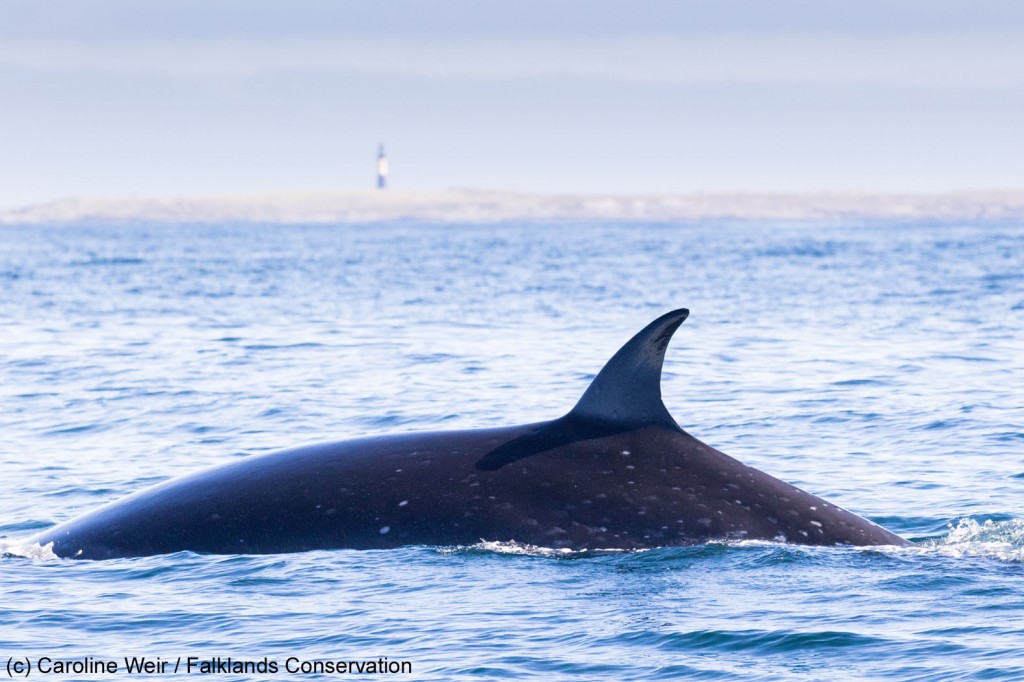
Sei whale surfacing with Cape Pembroke lighthouse in the background. Photo credit: Caroline Weir / Falklands Conservation.
Although local people have anecdotally reported that this season has been quiet for whales in Berkeley Sound compared to some other years, the pilot study has begun to reveal novel information on sei whales. We have collected dive times and surfacing interval data from the lighthouse and the boat that will be used to inform the aerial abundance estimate with respect to how long sei whales spend at the surface and are available for visual detection, and therefore how many submerged animals we may have missed. Spatial information collected from the aerial, boat and shore surveys will be used to examine habitat preferences and also to inform management with regard to how the distribution of whales overlaps with human activities.
The small boat work has shown that photo-identification is a viable technique for the study of sei whales, although individuals vary considerably in the extent and permanence of natural markings. Sei whales do not lift their tails out of the water when they dive, and often surface without arching or showing much of their flanks. Consequently, only the dorsal fin is consistently available for photo-identification purposes. We have found that some sei whales do have small nicks around the edges of the fin suitable for long-term recognition, but many individuals have relatively clean fins. For the latter grouping, identification has primarily focussed on the pattern of cookie-cutter shark scars along the flanks.
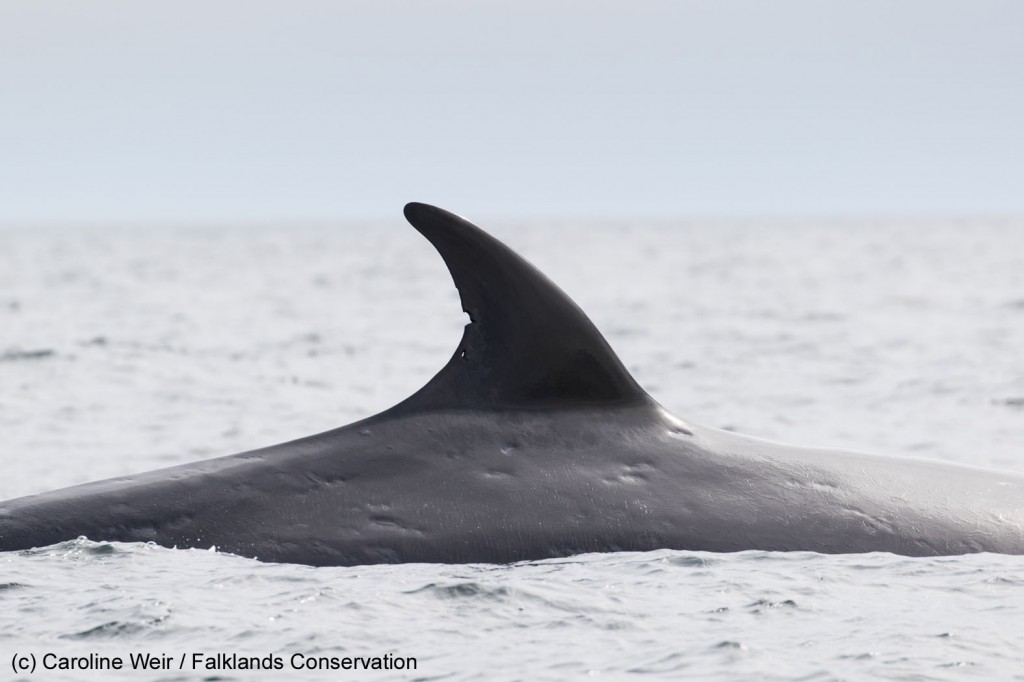
Sei whale with a distinctive dorsal fin suitable for photo-identification purposes. Photo credit: Caroline Weir / Falklands Conservation.
A catalogue has been established showing the best left and right side images of each individual. The catalogue allows us to investigate the spatial movements, residency and social affiliations of individual animals. We have found that some of the whales have remained in Berkeley Sound for several weeks, whereas others were identified once only before moving on to other areas. Sei whales in Berkeley Sound are often found in small groups of 2 to 4 animals, as well as on their own. However, the social structure of groups seems to be very fluid, with individual whales photographed with different companions over time. The images have also produced other interesting information on the species; for example, some of the sei whales photographed in Berkeley Sound bear tooth rake scars that show they have had interactions with killer whales.
The project has confirmed that Berkeley Sound appears to represent a feeding area for sei whales. Most of this feeding behaviour occurs subsurface and is difficult to observe, but we have photographed sei whales skimming and gulping lobster krill at the surface.

Sei whale gulping lobster krill at the surface. Photo credit: Caroline Weir / Falklands Conservation.
We have also recorded many whale faecal events, with the faeces appearing as a reddish-brown streak in the water just after a whale has arched its back for a longer dive. We have collected whale faeces using a fine-mesh net in order to investigate diet. Faecal matter can also provide information on hormones, parasites and potentially whale DNA. In an effort to understand the population structure of sei whales in the Falklands and the wider Southern Hemisphere, we have also obtained genetic information using tissue samples from dead stranded whales, bone shavings drilled from whale bones found in gardens around Stanley, and biopsy sampling of a small number of live whales (under permit).
In addition to the sei whale research, my work with Falklands Conservation has also involved attending cetacean strandings to collect samples and measurements. So far this has included a juvenile killer whale, a pilot whale calf and a female spectacled porpoise. It is always sad to see dead animals washed ashore, but such occurrences provide unique opportunities to collect data on life-history, ecology and human impacts. Spectacled porpoises are very seldom recorded either alive or dead, and this was an amazing chance to see at close hand this beautiful and rare species.
We will continue the fieldwork until the sei whales depart Falklands waters and head off to their wintering grounds (unknown), which we expect to occur during May. Hopefully many more exciting discoveries lie ahead of us in unravelling the secrets of these mysterious whales.
Written by Caroline Weir, Sei Whale Project Officer for Falklands Conservation (http://www.falklandsconservation.com/).
28 April 2017.

